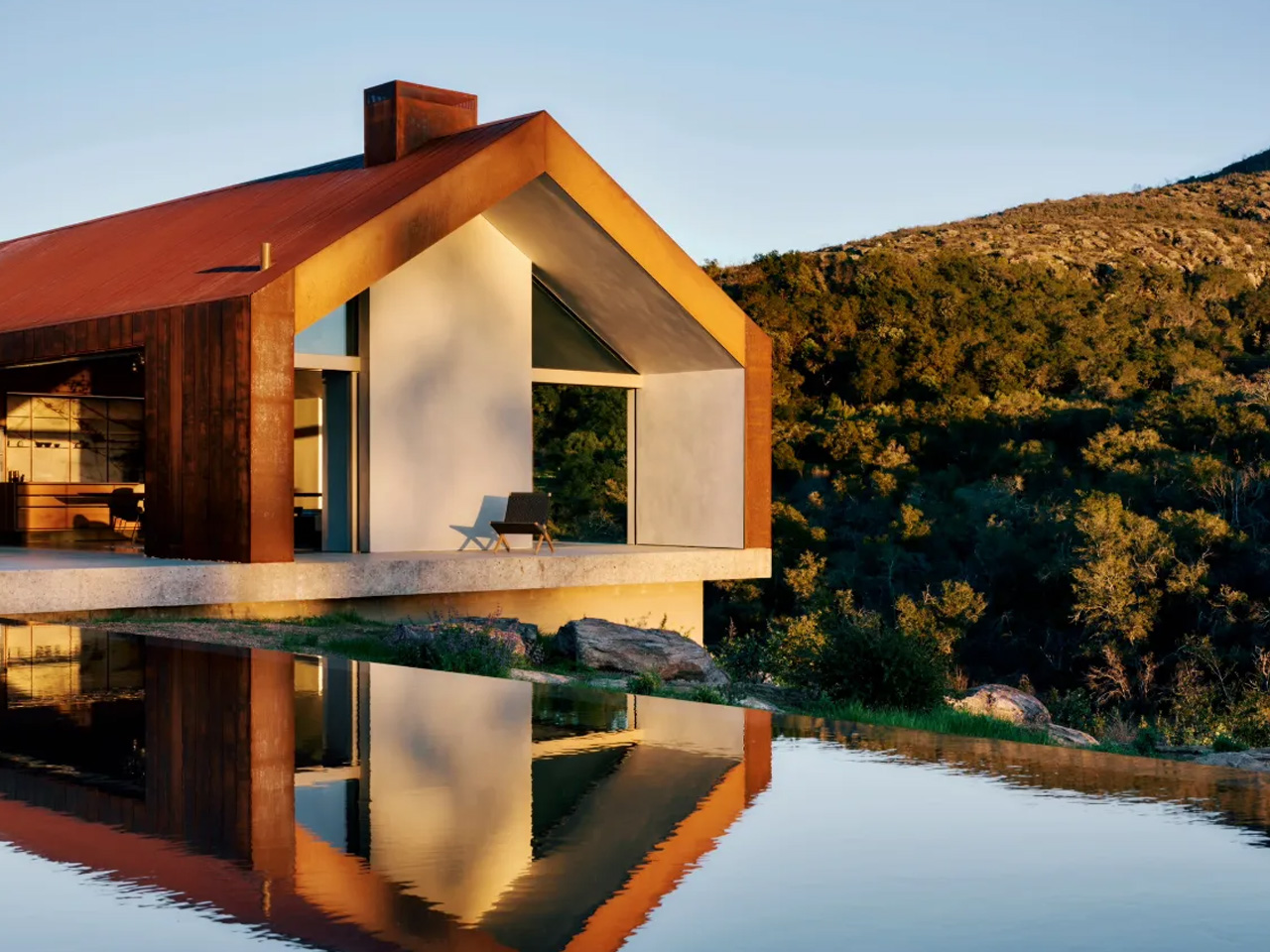Ultimate Fire-Resilient Minimal Retreat In California Is Designed For Modern Weekend Living
![]()
Amnesia House, designed by Edmonds + Lee Architects, introduces an uncommon sense of calm in the wilds of Northern California. Conceived as a minimalist retreat, the home steps away from the city’s demands, offering a space that feels both elemental and contemporary. Its structure responds not only to the shifting light and landscape, but also to the pressing realities of fire resilience, integrating function without sacrificing a certain quietude. The home’s geometry is simple, its palette muted, expressing a belief that beauty emerges from restraint.
Entering the Amnesia House, one notices how openness defines the experience. Expansive glass frames the forest, letting daylight move freely across polished concrete floors and white oak millwork. The main living space is open and uncluttered, anchored by a kitchen that blends seamlessly into the architecture. While every detail feels deliberate, nothing distracts from the view or the sense of escape. Amnesia House is not an exhibition of excess but a distillation of what’s necessary for rest and reflection.
Designer: Edmonds + Lee Architects
![]()
![]()
The architects created this design with a clear intention: to build a counterpoint to their celebrated Remember House in San Francisco. Where the urban project is layered and gallery-like, Amnesia House is more monastic, favoring horizontality and understatement. The roofline is crisp, echoing the brush of the landscape, while deep overhangs provide shelter from both sun and wildfire embers. This sensitivity to the environment is present in every aspect, from the fire-resistant materials to the way the building settles into its site.
Living here is about engaging with the elements rather than shutting them out. Windows slide open to the breeze, and the main terrace extends the living area outdoors, blurring the distinction between interior and exterior. The furniture is minimal, the art sparse, leaving room for the changing light and the sounds of the forest to become the home’s true adornments. There’s a deliberate absence of distraction that encourages a slower pace, a deeper connection with the landscape.
![]()
![]()
The plan of the home is efficient—two bedrooms, a flexible guest suite, and a main living core that adapts to both solitude and gathering. Every finish is chosen for durability and ease of maintenance, reflecting an understanding that a weekend retreat should never become a burden. The firewise strategies—metal roofing, non-combustible siding, minimal landscaping close to the house—are integrated so seamlessly that they become part of the architecture’s overall serenity.
Amnesia House champions an approach to living that finds luxury in simplicity and resilience. Rather than striving for spectacle, the architects frame the essentials: light, shelter, and a connection to place. The result is a home that fosters reflection and comfort, offering its owners not just a retreat from the city but a gentle reminder of the elemental pleasures of quiet design. In this way, Amnesia House serves as both a functional refuge and a subtle meditation on the art of living well.
![]()
![]()
![]()
![]()
![]()
![]()
The post Ultimate Fire-Resilient Minimal Retreat In California Is Designed For Modern Weekend Living first appeared on Yanko Design.


